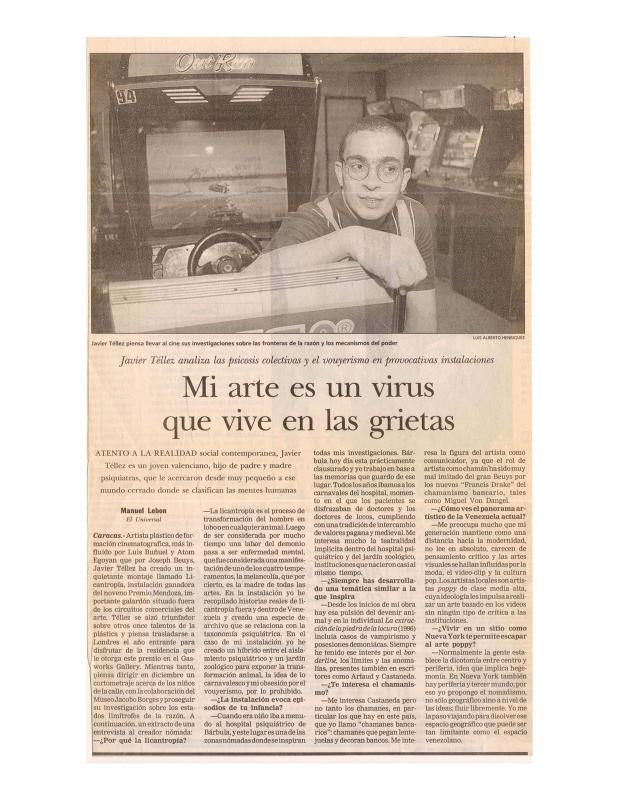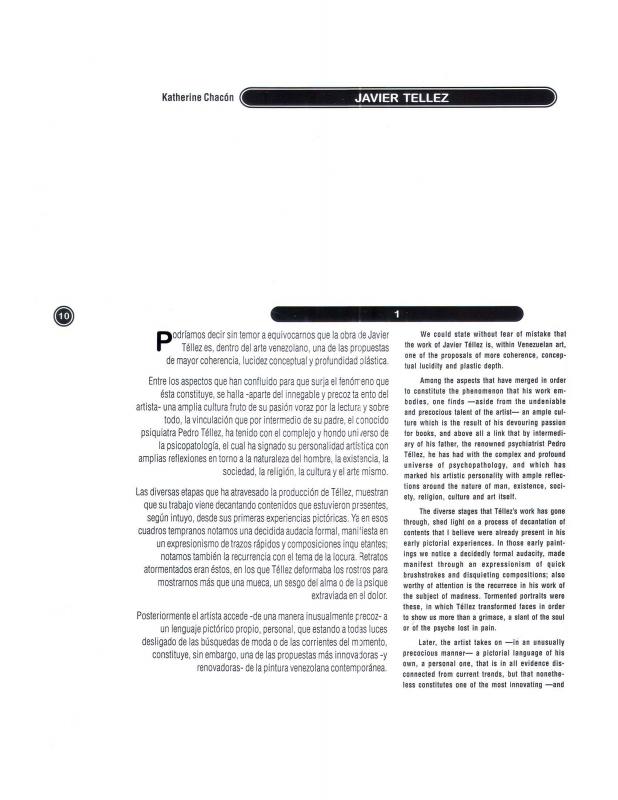The Venezuelan journalist Ana María Mendoza’s review of Licantropía—the work by Javier Téllez (b. 1969) that took the prize at the ninth edition of the Premio Eugenio Mendoza in 1998 (Sala Mendoza, Caracas)—includes interesting discussions about the artist and his work. The journalist’s detailed description of the elements in the installation help to guide and inform the reader prior to visiting the exhibition. She mentions two iron beds, mattresses, a metal fence, several hospital files containing case histories, a video that refers constantly to the moon and wolves, and two wolf masks placed beside the story of “Amala and Kamala,” two little girls with wolf-like features.
In addition to providing general information about the importance of the Mendoza Prize and the quality of the works in this group exhibition, the article quotes the young artist as he talks about his research into mental illness and hospital confinement. In doing so, Téllez demonstrates his considerable knowledge about the subject of his work. He explains that, in his installation (Licantropía), isolation undergoes a sort of metamorphoses between two institutions: psychiatric hospitals and zoos, which are similar in many ways and were founded at the same time, during the French Revolution. He also explains that “lycanthropy” has been considered a disease since about 1500. It means the delirium suffered by a man who is transformed into a wolf or other wild animal, a condition that used to be diagnosed as demonic possession, the cure for which was to be burned at the stake. Hence the stories about the disease’s medical and historical evolution. In summary, says Téllez, his installation seeks to show that man can turn into an animal, though perhaps only in a fragmentary molecular sense rather than as a full-blown transformation, since “a man does not become a wolf as such, but can certainly howl like one.”
For more about Téllez and his work, see by Rubén Gallo “Del mausoleo al juego en cuatro imágenes / From the mausoleum to the playroom, in four images” [doc. no. 1155086]; by Carmen Hernández “La extracción de la piedra de la locura: una instalación de Javier Téllez” [doc. no. 1154986]; Ruth Auerbach’s interview “Trobar clus: de cómo despistar al expectador” [doc. no. 1154795]; Manuel Lebon’s interview “Mi arte es un virus que vive en las grietas” [doc. no. 1154938]; and, finally, the essay by Katherine Chacón “Javier Téllez” [doc. no. 1155070].





